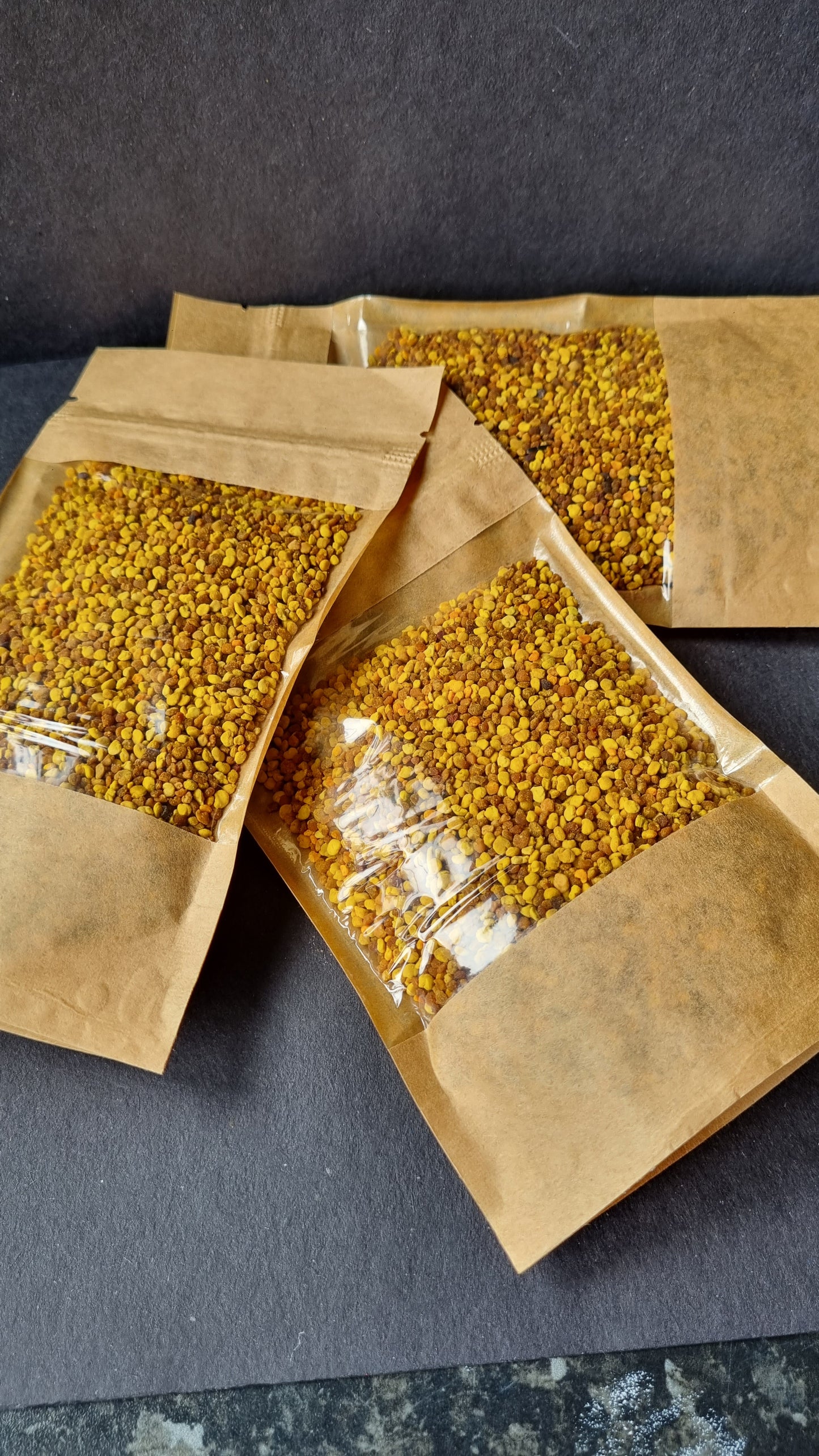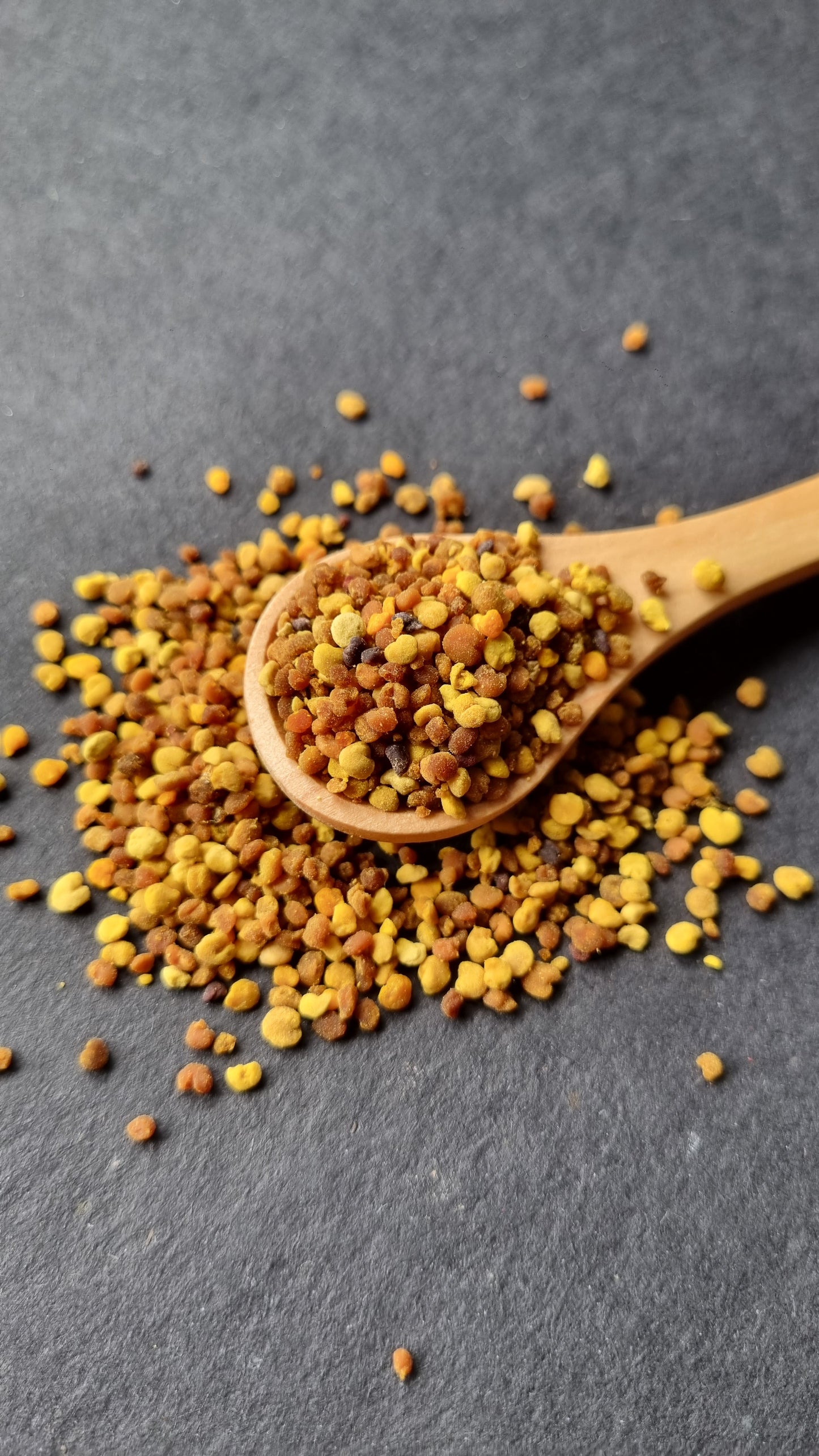BEE POLLEN
jaromishop
What is Pollen?
Pollen is the male sexual characteristics of plants that bees collect, store as food and feed on. On a warm summer day, you can see a bee landing on a flower, rising and landing on another, carrying a ball of pollen on its hind legs. The pollen of each plant species differs in color, shape, and size. Pollen comes in pleasant colors depending on the plants from which it is collected, from white, yellow, orange to brown, black, crimson, purple. Each bee collects about 20 mg of pollen.
How is pollen collected by bees good for us?
According to apitherapists, pollen has very antioxidant, antibacterial, antiviral and immunostimulating properties. Pollen is rich in vitamins, especially group B, as well as A, C, D, E. It also contains carotenoids, rutin, folic acid, proteins and trace elements.
Pollen has a positive effect on the good system, it is suitable for use in case of bad mood, when suffering from insomnia, to strengthen immunity, when recovering from illnesses. Pollen improves metabolism, provides energy, helps with atherosclerosis, suppresses inflammation, strengthens capillaries.
How and when to use pollen?
Pollen is recommended to be used for one or two months (with a weekly break), preferably in the first half of the day. For an adult - about 20 g per day (a tablespoon), for a child - as many grams of pollen as they are years old.
Ways of using pollen:
You can eat a spoonful of pollen every morning after breakfast with warm water.
You can dissolve pollen pure or mixed with honey in a quarter of a glass of warm water and drink it during the morning meal.
Pollen can also be simply mixed with honey and eaten one teaspoon at a time in the morning.
Pollen is suitable for adding to yogurt, you can use it to flavor fruit and vegetable cocktails, and salads.
You can add the good properties of pollen to lukewarm coffee or tea.
Couldn't load pickup availability
Share






